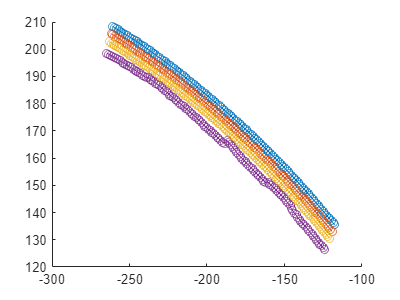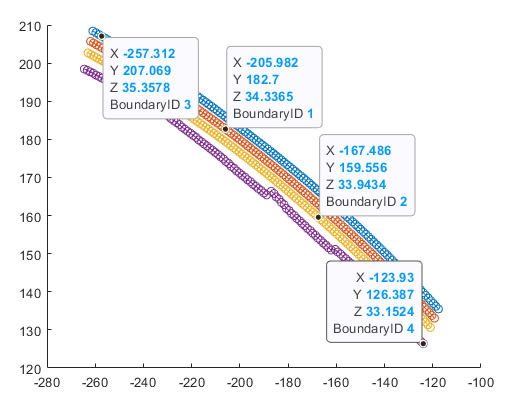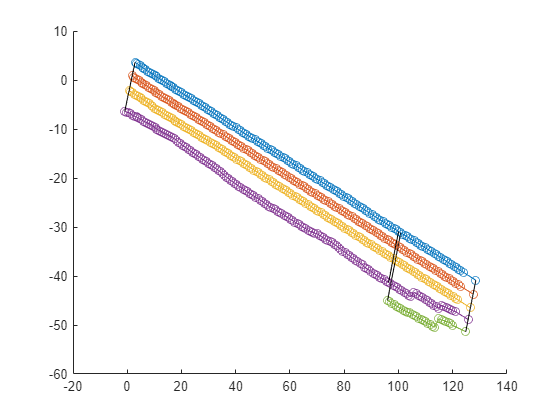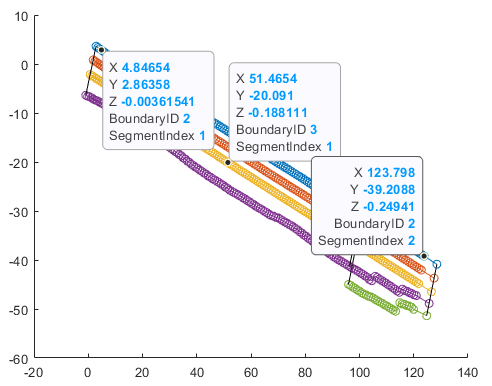plot
Description
plot( plots all the lane
boundary points in the input laneBoundaries)laneBoundarySegment, or laneBoundaryGroup object laneBoundaries.
plot(
specifies options using one or more name-value arguments. For example,
laneBoundaries,Name=Value)LaneBoundaryIDs=laneBoundaryIDs plots only the lane boundary points
that belong to the specified lane boundary IDs laneBoundaryIDs.
axesHandle = plot(___)axes object.
Note
This function requires the Scenario Builder for Automated Driving Toolbox™ support package. You can install the Scenario Builder for Automated Driving Toolbox support package from the Add-On Explorer. For more information about installing add-ons, see Get and Manage Add-Ons.
Examples
Input Arguments
Name-Value Arguments
Output Arguments
Version History
Introduced in R2024a



